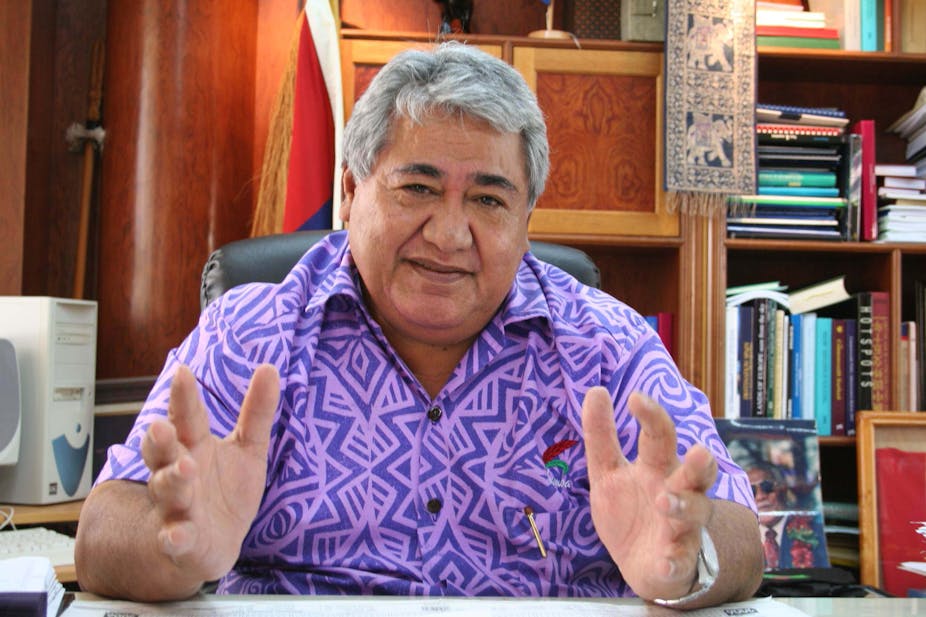Samoa’s prime minister Tuilaepa Sailele Malielegaoi has announced plans to shift the International Date Line to the east – a move that will see the Pacific nation divided from its near neighbour, American Samoa.
Currently, Samoa sits to the east of this line – which runs through the middle of the Pacific – and is 11 hours behind GMT, 21 hours behind eastern Australia and 23 behind New Zealand.
It’s one of the last places on Earth to see out the day.
Time is relative
Time is a human invention, a collection of ideas that has evolved over, well, time into what we experience today.
People have long carried timepieces, at one stage in a pocket, then on the wrist. These days, we use mobile phones that not only tell the time but also the location of the bearer.
Time used to be a very local affair, with different methods of measurement and different standards.
That was fine when people travelled slowly and, for the most part, didn’t know the time anyhow. When they arrived, they arrived, within a few days of punctuality. Fashionably late, or early, was the norm.
As everyone had different calendars, even the reference point for the day in question had to be specified.
It was travel technology that brought about the need for knowing the exact time, and the need for a global measure.
Sea navigation brought about the need to fix a point on the planet from which to measure distance from departure to arrival point, or longitude. Latitude – placement between the poles and the equator – had been known for some time.
Prime meridian
The English, setting about to rule the waves, determined their point of departure an 18th century “ground zero”. This was at the Royal Naval College at Greenwich, and it still exists today.
There were rivals for this premier position (France notably) but in the end the disagreement was solved by dividing measurement.
It was decided the prime meridian would be English, but the International Bureau of Weights and Measures would be in Paris. In other words, the starting point would be English, but the French determine time.
There are 40 official time zones on land and an additional 25 nautical ones, required to accommodate local conditions.
Nothing actually happens at the prime meridian at Greenwich: one of the most popular tourist photographs involves standing astride a red mark looking cold.
But something has to happen somewhere. Otherwise going round the globe, as many people do today, would cause an endless mounting up of days:
International Date Line
The International Date Line is as arbitrary as the prime meridian. It runs through the sparsely inhabited Pacific Ocean and, lacking landmarks, is changeable – liquid, one might even say.
Technically, Rapa Nui (Easter Island) should have a four-hour time difference with mainland Chile, but only has a two-hour difference to allow government officials to better communicate.
When the threat of Y2K was in the air, Kiribati, the former Gilbert Islands, “moved” Caroline Island so that it would be the first to greet the new millenium. It was even renamed “Millennium” in the hope of sparking a tourist boom to the uninhabited place.
Now, Samoa has decided that from the end of this year, they will be on the same side of the imaginary Date Line as their trading partners, principally Australia and New Zealand.
Echoing Kiribati’s hopes, Malielegaoi said there might even be a tourist spin-off from the date division of his nation from American Samoa, with people wanting two birthdays or anniversaries able to travel the 40 miles east to the island chain to have them.
Most interestingly, the change will mean the sun rises first and sets last in Samoa, a vision of completeness and world relevance that Samoans themselves always have had of the place they call “the cradle of Polynesia”.

